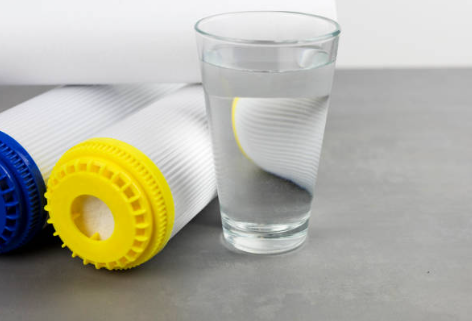The Importance of Pre Chlorination in Water Treatment
Water treatment is a crucial process that ensures the safety and quality of our drinking water. One of the key steps in this process is pre chlorination, which involves the addition of chlorine to the water before it undergoes further treatment. Pre chlorination plays a vital role in disinfecting the water and eliminating harmful microorganisms. In this article, we will explore the concept of pre chlorination in water treatment and its various aspects.
1. Understanding Pre Chlorination
Pre chlorination is the initial step in the water treatment process, where chlorine is added to the raw water. It is done to control the growth of algae, bacteria, and other microorganisms present in the water. Chlorine acts as a powerful disinfectant, effectively killing harmful pathogens and making the water safe for consumption.
2. How Does Pre Chlorination Work?
When chlorine is added to water, it forms hypochlorous acid and hypochlorite ions. These compounds attack the cell walls of microorganisms, disrupting their vital functions and leading to their destruction. This process is known as oxidation. Additionally, chlorine also reacts with organic matter present in the water, reducing unpleasant odors and tastes.
3. Benefits of Pre Chlorination
Pre chlorination offers several benefits in water treatment:
- Disinfection: Chlorine effectively kills harmful bacteria, viruses, and parasites, preventing waterborne diseases.
- Algae Control: Chlorine inhibits the growth of algae, preventing the formation of algal blooms in water bodies.
- Odor and Taste Improvement: Chlorine reacts with organic compounds that contribute to unpleasant odors and tastes, improving the overall quality of the water.
- Residual Protection: Chlorine can form a residual disinfectant that continues to provide protection against microbial regrowth during the water distribution process.
4. Factors Affecting Pre Chlorination
Several factors influence the effectiveness of pre chlorination:
- Water Temperature: Chlorine reacts faster at higher temperatures, so the efficacy of pre chlorination may vary with seasonal changes.
- pH Level: The pH of water affects the disinfection process. Chlorine is most effective at a pH range of 6.5 to 7.5.
- Organic Content: Higher organic content in water may require additional chlorine dosage to achieve effective disinfection.
- Reaction Time: Sufficient contact time between chlorine and microorganisms is essential for effective disinfection. Longer contact time may be needed for heavily contaminated water.
5. Pre Chlorination and Chlorine Byproducts
While pre chlorination is essential for water disinfection, it can lead to the formation of disinfection byproducts (DBPs) such as trihalomethanes (THMs) and haloacetic acids (HAAs). These DBPs are a concern due to their potential health risks. Proper monitoring and control of chlorine dosage and contact time can help minimize the formation of DBPs.
6. Pre Chlorination in Different Water Treatment Systems
Pre chlorination is widely used in various water treatment systems, including:
- Municipal Water Treatment Plants: Pre chlorination is an integral part of the multi-step water treatment process followed by municipal water treatment plants.
- Industrial Water Treatment: Industries that rely on water for their operations often employ pre chlorination to ensure the quality of their process water.
- Swimming Pool and Spa Treatment: Chlorination is essential to maintain proper hygiene and prevent the spread of waterborne illnesses in recreational water facilities.
7. Pre Chlorination and Alternative Disinfection Methods
While chlorine is the most commonly used disinfectant in pre chlorination, alternative methods are also gaining popularity. Some of these methods include:
- UV Disinfection: Ultraviolet (UV) light is used to destroy microorganisms without the need for chemical disinfectants.
- Ozonation: Ozone gas is a powerful oxidant that effectively kills microorganisms and removes organic compounds.
- Chlorine Dioxide: Chlorine dioxide is another disinfectant used as an alternative to chlorine, particularly in situations where chlorine byproducts are a concern.
8. Regulations and Guidelines
Pre chlorination practices are regulated by various organizations and agencies to ensure the safety and quality of drinking water. These regulations specify the acceptable chlorine levels, residual disinfectant concentrations, and limits for disinfection byproducts. Compliance with these guidelines is crucial for water treatment facilities to ensure the provision of safe drinking water.
9. Conclusion
Pre chlorination is an essential step in water treatment, playing a crucial role in disinfecting water and making it safe for consumption. By effectively eliminating harmful microorganisms, controlling algae growth, and improving odor and taste, pre chlorination ensures the delivery of high-quality drinking water. However, it is important to monitor and control chlorine dosage to minimize the formation of disinfection byproducts and comply with regulatory standards.
10. Related Long-Tail SEO Keywords
- What is the significance of pre chlorination in water treatment
- Pre chlorination process in water treatment plants
- Understanding the role of chlorine in pre chlorination
- How to optimize pre chlorination for effective disinfection
- Pre chlorination vs. alternative water disinfection methods
- Importance of monitoring chlorine levels in pre chlorination

